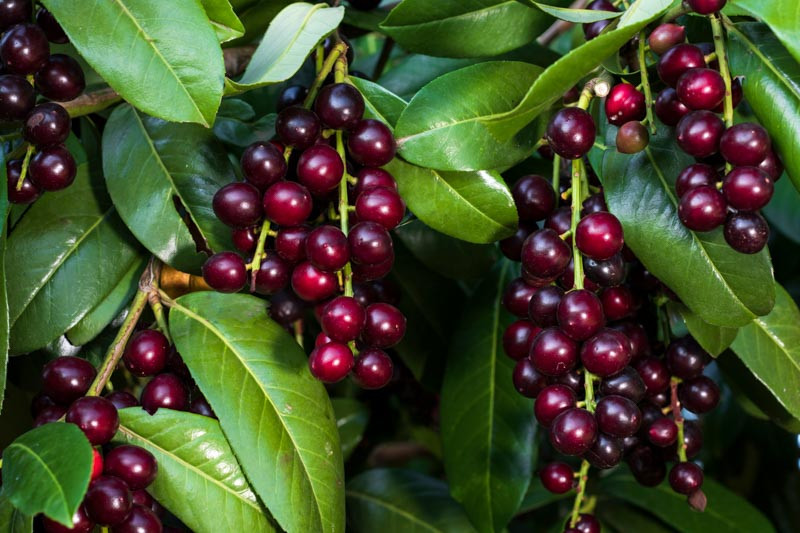Cherry Laurel: Versatile Beauty for Your Garden
Prunus laurocerasus, commonly known as Cherry Laurel, is an evergreen shrub with a host of interesting features and facts. This ornamental plant, belonging to the Rosaceae family, is widely appreciated for its lush foliage and versatility in gardens and landscapes.
Origin and History: Native to regions bordering the Black Sea, Cherry Laurel has been a mainstay in European gardens for centuries, valued for its dense, evergreen foliage. It gained popularity in England in the 16th century.
Rapid Growth: One of the most notable characteristics of Cherry Laurel is its rapid growth rate. This feature makes it a popular choice for creating quick privacy hedges and screens in landscapes.
Toxic Beauty: Despite its beauty, Cherry Laurel’s leaves and seeds contain cyanogenic glycosides, which can release cyanide when chewed or crushed. This toxic trait is a natural defense against herbivory.
Attractive to Wildlife: The shrub’s small, fragrant flowers, blooming in spring, are a magnet for bees and butterflies. In autumn, its fruits attract birds, making it beneficial for biodiversity.
Versatile Landscaping Use: Cherry Laurel is highly versatile and can be used for hedging, screening, or as a standalone ornamental shrub. It is also popular in foundation plantings and public parks.
Shade Tolerance: Unlike many plants, Cherry Laurel thrives in full sun to full shade, making it adaptable to various garden settings.
Fragrant Flowers: The plant’s flowers, though small, emit a sweet fragrance, adding a sensory dimension to its aesthetic appeal.
Winter Hardiness: It’s hardy in a range of climates (USDA zones 6-9), capable of withstanding moderately cold temperatures, making it a staple in many temperate gardens.

